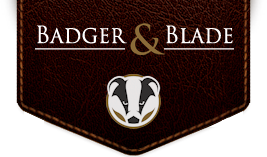Newbie Questions.
1. Is blade exposure directly related to blade feel? Seems it would be based on the diagrams and definitions I've read/seen.
2. I would think blade feel would be a help in getting the proper angle, and everyone should want it. But yet I have read this is not true. Please explain.
3. How does a razor with negative (or neutral) blade exposure shave efficiently, or at all? Is your skin protruding into the gap? More pressure needed to accomplish this?
1. Is blade exposure directly related to blade feel? Seems it would be based on the diagrams and definitions I've read/seen.
2. I would think blade feel would be a help in getting the proper angle, and everyone should want it. But yet I have read this is not true. Please explain.
3. How does a razor with negative (or neutral) blade exposure shave efficiently, or at all? Is your skin protruding into the gap? More pressure needed to accomplish this?








